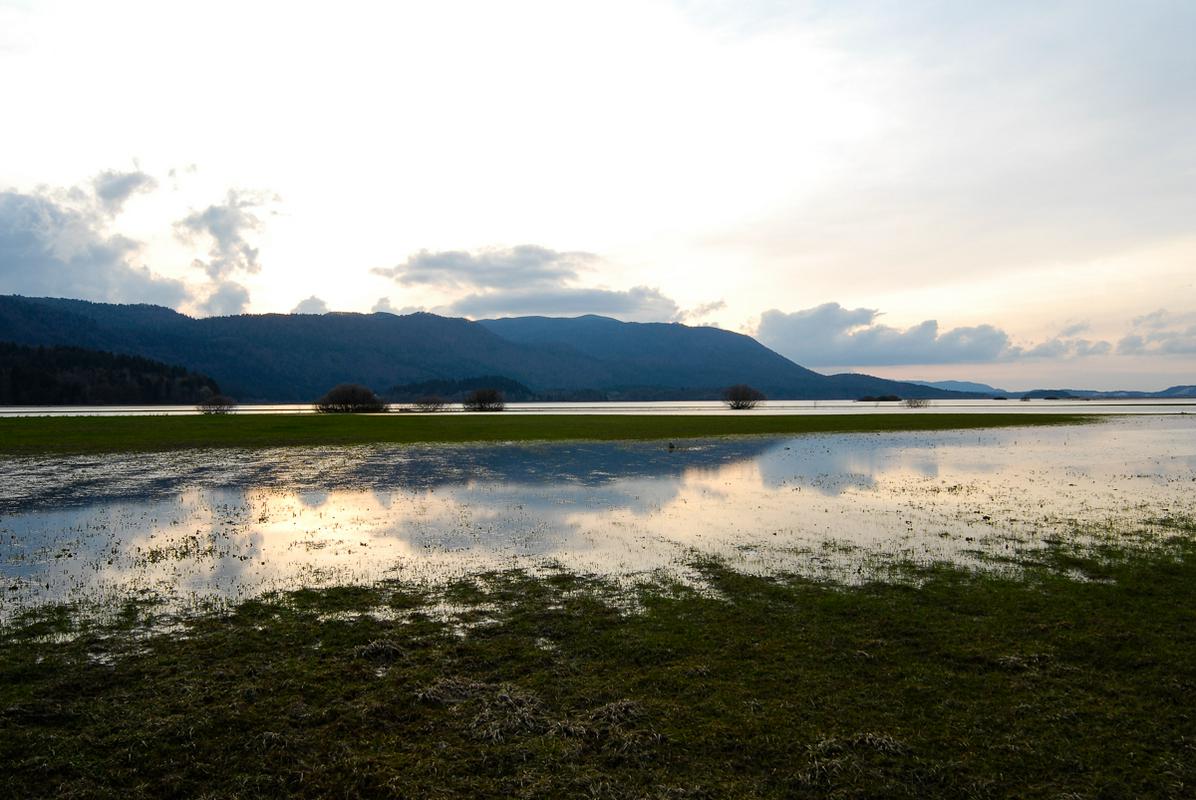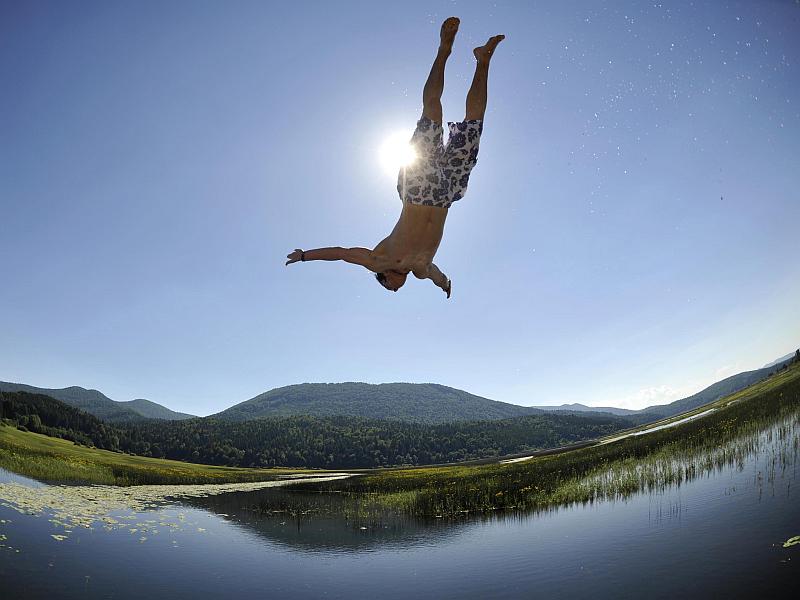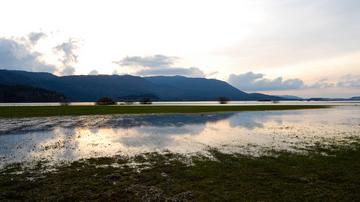

For some six months, it is filled with water, and during the other half of the year, it is dry and you can walk on the bottom of the lake. But the mysteries of Lake Cerknica are much deeper, reaching deep into the karst underground and a history which also includes stories of witches.
You may easily find yourself standing in the lake without even knowing it. The water disappears into sinkholes and reappears in another karst field or a river or remains in one of the many underground caves.
When water is abundant, the lake extends over more than ten kilometres in length and almost five in width and exceeds thirty square kilometres. When this happens, Lake Cerknica becomes the largest lake in Slovenia. But the surface and volume change constantly, on a daily basis, from year to year; no rules govern the movement of the water’s surface. The quantity of precipitation affects it the most. Water runs into Lake Cerknica from karst springs in the northern part of the Cerknica Field. Its only surface tributary is the Cerkniščica Stream. On the other hand, water runs from the lake through sinkholes.
Lake Cerknica is one of the most picturesque karst phenomena, surrounded on the south-western side by the Javorniki Hills and Slivnica Hill on the opposite side. Cerknica, the lovely town from which the lake takes its name and which is famous for its large carnival, is situated in the foothills of Slivnica Hill, which is a popular hiking destination offering exceptional views of the lake and surrounding area. Some 50 metres below the hilltop is the Witches’ Cave, from which mist rises in the morning. People used to believe that witches cooked up bad weather and other bad things in the cave.
Miha Jernejčič from TIC Cerknica explains that Slivnica Hill used to be bare; no trees grew on it and cattle grazed the hill. During stormy weather, the cattle grew agitated because of the thunder and scattered around the hill to find shelter. The shepherds then went to look for them with lanterns. Because Slivnica Hill can be seen far away, people in the valley saw ‘lights flying’ around the hill and heard screaming. These were the shepherds calling their cattle. People attributed these phenomena to witches, and their belief was further strengthened by the mist rising from the Witches’ Cave. This is actually the result of condensation in the cave. Today, the witches are among the favourite characters at the traditional carnival.
The village of Otok is another interesting site in Lake Cerknica: it is situated in the middle of the lake, and when the water is really high, it becomes the largest Slovenian island (Slovenian: otok). The village embankment was constructed some one hundred years ago; before that, residents used boats for transportation which were up to 16 metres long. They transported everything in the boats: wood, produce, hay and even cattle.
Standing on the lake
Since there is plenty of water in the spring which has been collecting over the winter, I decided to explore the lake somewhat differently. I stepped on a SUP (Stand Up Paddle) board, and explored the lake standing up while keeping my balance and admiring the surroundings.
I had never been on a SUP before. The experienced stand-up paddler and windsurfer Žiga Hrček from the Standupaddler.si team reassured me. "Don’t worry. You don’t need any previous experience for SUP. You will get a feeling for the movement in a few minutes and everything will be fine. No one has ever fallen into the water. Well, maybe a few went for a swim," joked Žiga, but he was convincing enough for me to step on the board. After a few wobbly metres, my uncertainty disappeared. The closer I was to the first high grasses growing from the lake, the more confident I became.
The water’s surface gives a feeling of incredible serenity. It is disturbed only by a horse-drawn carriage on its way from one village to another. The birds are on the lookout for fish. Migratory birds have already returned with the spring. The lake is a haven for bird-watching in the warmer months. Over 200 species can be found here.
The wind is also frequent in this region. And our journey turns into the wind. It isn’t easy. Žiga encourages us and promises us that the best part is still to come. We make a short stop in the foothills of the Javorniki Hills, where a fallen tree prevents us from looking into the cave. The Karst is truly full of surprises and mysteries. We are about halfway and everybody agrees that this is a very pleasant way to explore natural beauties. You can also discover other parts of Slovenia on a SUP; the Ljubljanica and the Krka rivers and some other lakes.
Lake Cerknica is a wonderful place, where impressions and images change by the minute. The local people are incredibly friendly. They will be happy to chat with you and share some of the many stories and legends about the lake and surrounding hills which have been passed from generation to generation. Exploring the lake while standing on the board was one the most pleasurable experiences of this spring, and I promised myself I would explore the lake in other seasons.
Lake Cerknica is increasingly popular as a recreational area, ideal for fishing, bird-watching, hiking, nature excursions (caving), wind-surfing, swimming, and ice-skating, depending on the season and the water level. The constantly changing landscape makes it worth a visit in any season.
Polona Prešeren, SINFO

























































